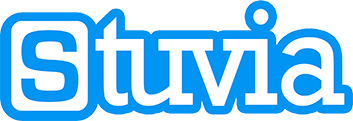
Applying for a job or an internship requires much effort. First, you need to find a good internship or job vacancy. Then you need to figure out if you see yourself doing that job. If you decide to apply, only sending an email expressing the wish for an interview is not enough. Companies that are looking to hire, often require at least a resume and a motivation letter. In this article, you will find an outline on how to create a good resume.
Importance of a resume
A resume is an overview of your skills and experience so that employers can decide if you fit the profile of the job or internship. It is a chance to list your education, experience, and accomplishments. Often, a resume can be referred to as curriculum vitae (CV) as well. The difference between a resume and CV may differ per country, so be sure to check the requirements of a specific country! For example, in Europe, the concepts of resume and CV are mostly interchangeable. Furthermore, the recommended length of a resume is a maximum of 2 pages. However, in the USA, a resume is often a listing of your skills and a CV is a minimum 2-page overview of certifications and grades obtained. The key here is to keep in mind the standard requirements. If you are unsure, you can always call the company to ask what they need from you. In this article, we are describing the most common information provided in a resume.
Sections of a CV
Normally, your resume or CV holds several sections. Online you can find several examples of layout and what to write in each section. You can play around with the layout, but make sure that it’s easily readable, especially if recruiters print it out. Chances are that they print in black and white, so while your colorful resume may look good on screen, it may seem sloppy when printed out. In general, a resume is two pages maximum. With this in mind, it can be handy to select the information on your resume carefully. For example, if you are applying for a job in IT, you can leave out your first job as a newspaper delivery boy on the weekends. While it shows that you have worked from a young age, it is better to list this job in your LinkedIn profile, so recruiters can find it if they are looking at your LinkedIn profile.
Important sections of a CV
Personal details
Here you can list your name, address, email, and phone number. A professional photo of yourself and a link to your LinkedIn page ar optional.
Profile
Next comes a section in which you state in a few words who you are and what you are looking for. Are you creative and would like to find a job in communications, that requires you to write articles all day? Are you analytic and looking for a consultancy job? Are you trained as a lawyer? Doctor? Hairdresser? Are you looking for more experience, training, guidance, a challenge? Adding this section to your resume shows that you have carefully thought about your future career.
Education
Furthermore, it is important to include all relevant education. Of course, stating your degree and educational level is required. If you have enough space, you could elaborate on the specifications, especially in the context of the job or internship you are applying to: did you do any specific courses that are helpful for the job requirements?
Experience
Then, the experience section is up. Here, you include all relevant internships and jobs. If you don’t have any, you may fill this section with odd jobs you’ve done in the past or volunteering work for example. Perhaps you participated in a committee at school, or you used to babysit your nieces every other Saturday. This shows that you are able to commit to a task with an outcome for a longer period of time.
Extracurricular activities
If not already listed in the experience section, extracurricular activities show your involvement in society. Here you can state your volunteering jobs, after school committees, mentoring roles, etc.
Skills
You may have acquired other skills as well. Here you can list your knowledge of languages, analytical skills and/or programming language skills, for example. Also, this section is meant to name other certifications, such as a first-aid diploma.
Activities and interests
Last but not least, it is worthwhile to list some of the activities you enjoy apart from your studies and career. This is the place to show some of your hobbies, whether it is doing triathlons, writing poetry or traveling. Other interests give the company a sense of your personality.
Software scanners
Some companies, often larger ones, make use of an automatized process based on artificial intelligence. This means that they run your resume through software, which then determines if your resume fits the job. This saves them time in reviewing, especially when there are many applicants. This is one more reason why it is important to create a strong resume. While it may be handy for the recruiter, you may want some tips and tricks to ‘beat’ the software and get selected for an interview. After all, explaining your skills and motivation in a person usually matters more than a written statement.
Optimizing your resume after these tips is best done by running it through such a program:Jobscan or VMock provide you with handy tools.Now you have a general sense of the content of a resume. Be sure to be brief and include relevant information. Now your resume is done and checked by Artificial Intelligence. Next up is your motivational letter!
